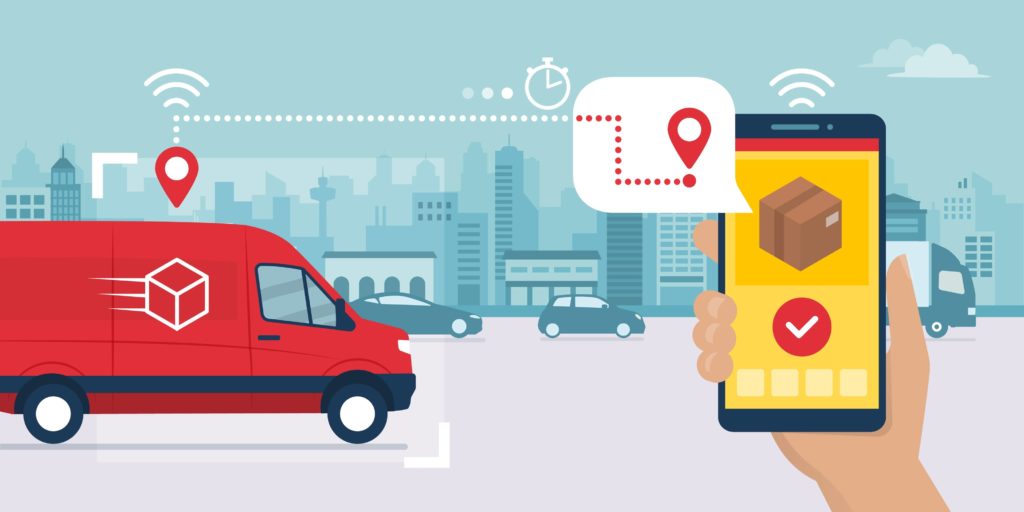
-
-
Products
- Industries
- Learn
- Partner
-
- Try Now
Reverse logistics, a planned process of moving goods from the end-user to the seller or manufacturer, has commanded as much attention as conventional logistics in the past few years. The flexible return and exchange policies have begun to blur the line between online and in-store shopping experience. The pandemic has also caused an attitudinal shift towards online retail, resulting in more returns.
The process of reverse logistics now has as much role to play as fast deliveries. However, the process is more complicated than one might think. This post will dig into some of the best technologies used by online platforms to simplify their return and exchange process. But first, here’s everything you should know about reverse logistics and its increasing importance in current times.
What is Reverse Logistics?
Image source: Medium
Reverse logistics is all about how well the dispatchers handle returning a product from consumer to the sender. It plays a crucial role in shaping the customers’ experience when things don’t turn out the way they expected. While the process varies widely among industries, the three main policies of reverse logistics management are Return Policy and Procedure (RPP), Remanufacturing or Refurbishment (ROR) and Waste Disposal (WAD).
The reasons customers cite for return and product category are two main factors that determine what needs to be done with the product once they are returned. For instance, if it is a manufacturing component or a gadget, it can be re-manufactured and sold again.
However, if customers cite no specific reason behind the return, the items are refurbished and restocked under respective shelves. This is mostly the case with clothing. The defective products that can neither be fixed nor re-manufactured goes under the disposal category.
The Rising Need for Reverse Logistics Management
The demand to process online returns has seen an unprecedented surge in the past few years. The pandemic-induced restrictions created a record-shattering demand for home deliveries. But making online deliveries a transparent and seamless experience hasn’t been that easy. For customers, the return experience matters as much as the delivery experience. Since they no longer have physical access to some of the country’s best brand outlets, they rely entirely on e-commerce apps and online orders. However, not having a clear return and exchange policy might deter customers from shopping online again. Every time a product is sent for return, the following questions tag along: Did the product reach the retailer? What if I don’t get my money back? How long will the retailer take to initiate the payment?
To streamline the return process, every online platform needs a successful reverse logistics management system that increases customer satisfaction and retention and enhances brand loyalty.
Why Need Dispatch Software for Reverse Logistics?
Manually keeping track of a consignment from its source to the destination can significantly increase the operational costs. Things start to get challenging as the supply chain spreads across cities, and there is an increase in the frequency of orders with a time constraint. The entire process can be wrapped up pretty quickly if it is automated with the help of dispatch software. Efficient Dispatch software like Tookan can help businesses optimize and streamline the supply chain in both directions.
Why Is It important?
The key to success in any business is the satisfaction of its customers. Primarily, there are two main reasons why you should have a robust reverse logistics setup.
- Increasing customer satisfaction: A customer may forget dozens of good shopping experiences, but they will always remember the one incident where things didn’t go as per their plans. In such a scenario, reverse logistics plays a very crucial role. Having a hassle-free return process shapes the user experience and overall customer satisfaction.
- Increasing the overall productivity: The productivity of any organisation depends on how well it manages its resources. Lack of coordination between the departments of an organisation can lead to an increase in the order fulfilment cycle time. With dispatch software at work, you can make sure that there is perfect coordination between the various departments of the business.

Why Does It Happen?
The reasons why customers return the product varies from one product to another, but here is a list of some of the most common ones:
- Sent a wrong product: When a faulty product is delivered to the customers, they have no option but to return it to the seller. Such cases can be minimised, but there’s no way to get rid of the problem completely. This is where reverse logistics comes in. The product should be replaced, returned, or the customer should be compensated for the inconvenience caused to them.
- Delay in delivery: It is difficult to tell exactly how much time it will take for a product to reach its destination. There are a lot of products that customers require on an urgent basis. Such products are of no use if not delivered on time. Customers may file a return request if the delivery time is more than what they expected.
- Sent a damaged product: Sometimes, the parcels get damaged during the transit. The best thing to do in such a case is to cancel the delivery, return the consignment and inform the receiver about its status.
- Wardrobing: Some customers deliberately order products from a store with an intention to return it after using it for a while. It is impossible to know exactly who is engaged in this malpractice. However, with dispatch software, you can keep an eye on customers filing return requests repeatedly. This can help you identify such frauds early and take necessary actions to prevent it.
How Can Dispatch Software Solve the Problems?
Let us now take a look at the wonders that a dispatch software like Tookan can do to improve the experience of both the business and the customers.
- Accelerate the process: The amount of time wasted during a return process is cut down by automated scheduling software. The software can allocate the workforce to maximise the efficiency of the process.
- Minimise customer impact: No matter what happens, the customer should be impacted the least. The customers who have a good experience with the return process will surely return to you again for your products or services.
- Identify flaws in the supply chain: Dispatch software can help you track down the irregularities in the supply system. By analysing the real-time data, you can find out where things are going wrong and what you can do to make them right.
- Transparency and Traceability: The best thing about the entire setup is its transparency. The sender, receiver and the delivery partner are informed about the status of the consignment in real-time. Transparency is a critical factor in building the trust of the customers.
- Manage Integrations: The more synced business operations are, the faster your return processing will be. When returned goods enter the warehouse, they are scanned by a system that automatically links the product with its delivery order, reflecting the manufacturing unit or warehouse it came from, the delivery date and a few other data points. The dispatch software helps maintain proper inventory management for efficient returns.
- Customised apps for all stakeholders: With Tookan, you get a complete suite of customised applications for all the stakeholders involved in the process. A separate application is available for the seller, delivery partner and the customer to keep track of the status of the order. The application suite is available for PC and Smartphones to make it convenient for you to manage your orders from anywhere.
- Real-time tracking: Getting regular updates about the status of the order dramatically reduces the chances of the order getting delayed or misplaced in the transit. It also helps the sender track down the cause of such an event.
- Smarter-scheduling: Smart scheduling is a process responsible for utilising the available resources in the best possible manner. There are different scheduling approaches that a logistic partner can take. With dispatch management software, scheduling becomes a lot easier.
Apart from the product itself, how a business handles reverse logistics is a significant indicator of its credibility. A customer always trusts the company which is ready to accept their mistakes and have an established framework of making things right.
Dispatch software is a beautiful example of emerging technologies like AI and IoT at work. They are fast becoming an integral part of the logistics chain.
A highly intuitive software like the Tookan requires minimal manual intervention and makes the process a lot more quick and straightforward. The software is trusted by thousands of companies worldwide.
So what are you waiting for? Get in touch with our team today.
Subscribe to stay ahead with the latest updates and entrepreneurial insights!

Subscribe to our newsletter
Get access to the latest industry & product insights.






















